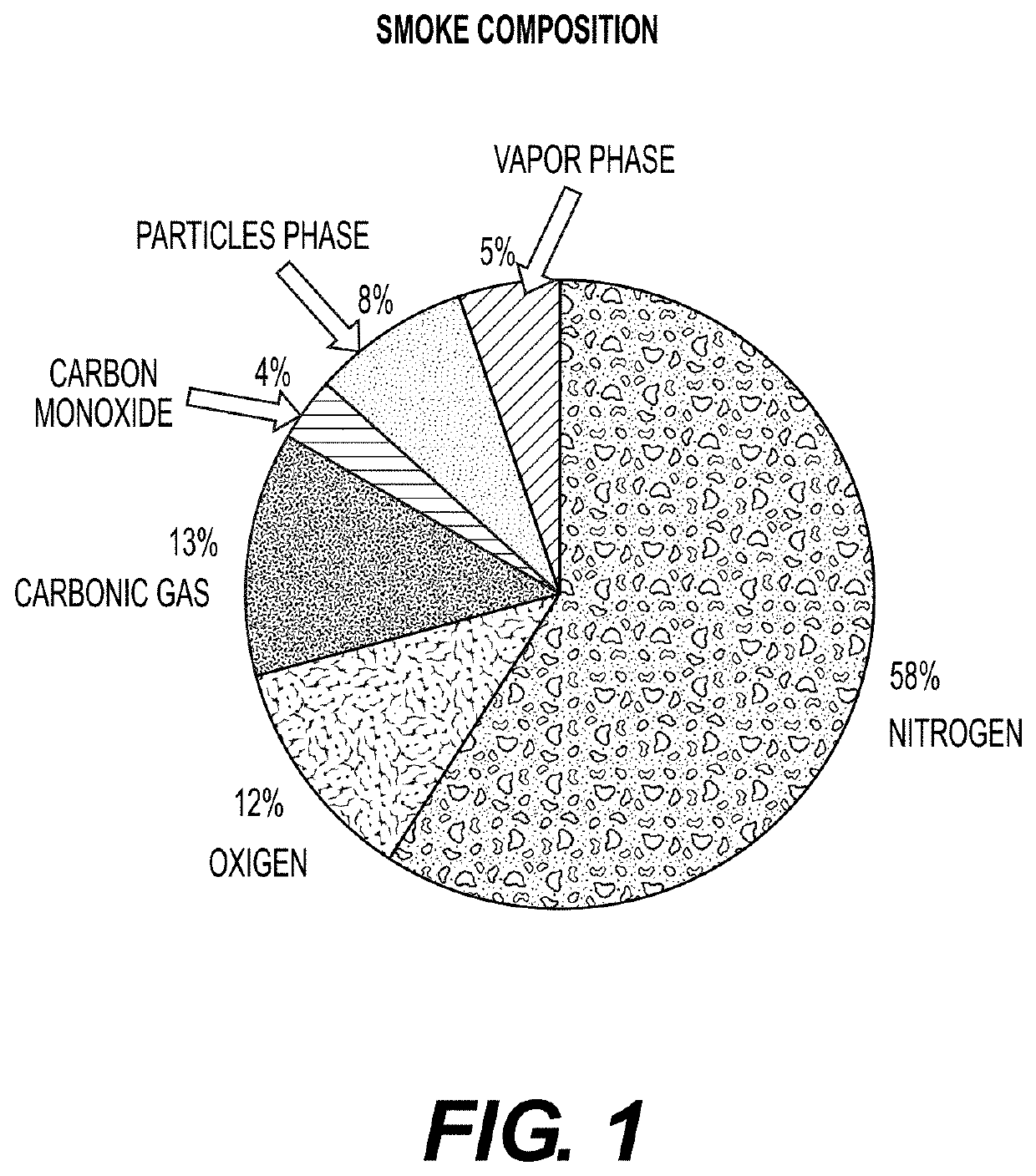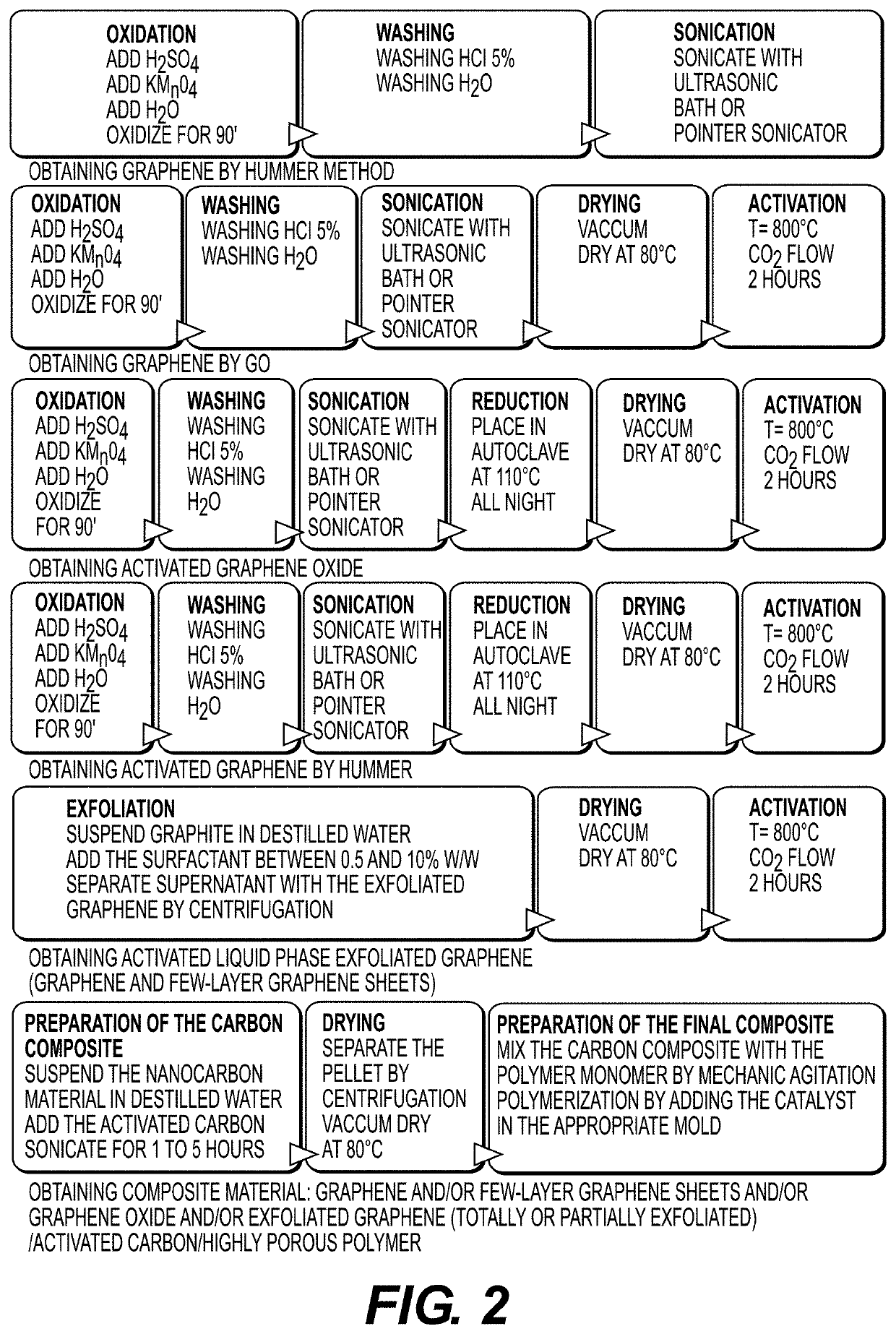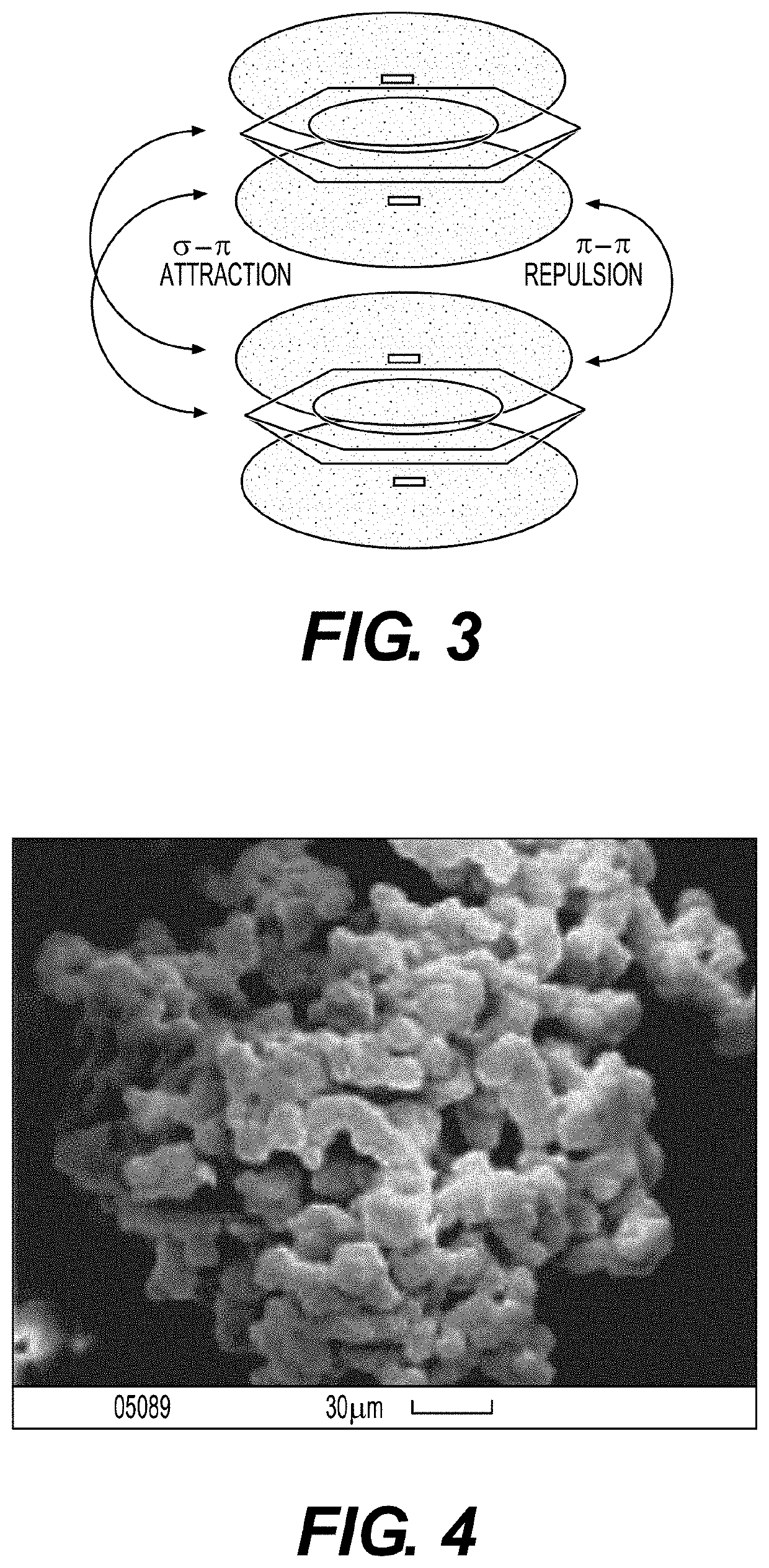Filtering material and filter for retaining polyaromatic hydrocarbons, carbonyls and other compounds from smoke from tobacco products
a technology of filtration material and filter, which is applied in the field of hybrid filter preparation process, can solve the problems of difficult implementation of inventions, particularly in chemical groups or families, and undesirable chemical groups or families
- Summary
- Abstract
- Description
- Claims
- Application Information
AI Technical Summary
Benefits of technology
Problems solved by technology
Method used
Image
Examples
case 1
[0066]
[0067]Cigarettes, A and B, were analyzed, responding to the overall design of the following figure:
[0068]The composition of the porous masses of these cigarettes is as follows:[0069]Cigarette A: Activated carbon 70%+graphene 6%+GUR 24%[0070]Cigarette B: Activated carbon 70%+GUR 30% (REFERENCE)
[0071]The main difference between the two cigarettes is the presence of graphene in the porous mass of A. The other physical and chemical properties are very similar in both products, with ventilation in the nozzles being 60% in both cases. Pressure drops were maintained in the range of 120 to 140 mmH20. Tobacco in both tobacco columns is the same.
[0072]The two groups of cigarettes were simultaneously smoked in a Cerulean SM450 smoking machine under the Health Canada Intensive regimen (six replicates of each cigarette) and the extracts were analyzed according to the internal method where 13 polyaromatic hydrocarbons were quantified. The results of the analysis are summarized in Table I, ...
case 2
[0073]
[0074]Cigarette C was analyzed, whose design responds to that of case 1 compared to a reference cigarette 1R6F from the University of Kentucky. The cigarette 1R6F is an international standard cigarette for research work and serves as a basis for comparing data from different laboratories. Cigarette C has a sector containing a porous mass with the following composition:
[0075]Cigarette C: Activated carbon 71%+graphene 11%+GUR 18%
[0076]Cigarette 1R6F is a cigarette with a conventional cellulose acetate filter.
[0077]Smoking trials of both cigarettes were conducted simultaneously on a Cerulean SM450 smoking machine using the Health Canada Intensive method (six replicates of each cigarette).
[0078]The results of the analysis are summarized in Table II and allow for the comparison of the reduction capacity of several polyaromatic hydrocarbons of the filter under this patent.
TABLE II% reduction of polyaromatic hydrocarbons in cigarette C compared to cigarette 1R6FBenzo[a]Benzo[k]Benzo[...
case 3
[0079]
[0080]In the cigarette C smoke of case 2, the reduction of carbonyl was assessed by comparing the result with that obtained for the reference cigarette 1R6F. The two cigarettes were smoked using the ISO 3308:2012 method and extracts were analyzed according to CRM 74:2018 for the determination of eight carbonyl (six replicates of each cigarette). The result is summarized in Table III and allows comparing the carbonyl reduction capacity of the filter under this patent.
TABLE III% reduction in cigarette carbonyl compared to cigarette 1R6FFormaldehydeAcetaldehydeAcetoneAcroleinPropionaldehydeCrotonaldehydeMEKButanalAverage cig. C79022571.064(μg / cig)Std. dev. cig. C3218220.521(μg / cig)Average 1R6F24502174484083930(μg / cig)Std. dev. 1R6F4301565143(μg / cig)% Reduction7282878982888585
PUM
| Property | Measurement | Unit |
|---|---|---|
| temperature | aaaaa | aaaaa |
| temperature | aaaaa | aaaaa |
| temperature | aaaaa | aaaaa |
Abstract
Description
Claims
Application Information
 Login to View More
Login to View More - R&D
- Intellectual Property
- Life Sciences
- Materials
- Tech Scout
- Unparalleled Data Quality
- Higher Quality Content
- 60% Fewer Hallucinations
Browse by: Latest US Patents, China's latest patents, Technical Efficacy Thesaurus, Application Domain, Technology Topic, Popular Technical Reports.
© 2025 PatSnap. All rights reserved.Legal|Privacy policy|Modern Slavery Act Transparency Statement|Sitemap|About US| Contact US: help@patsnap.com



